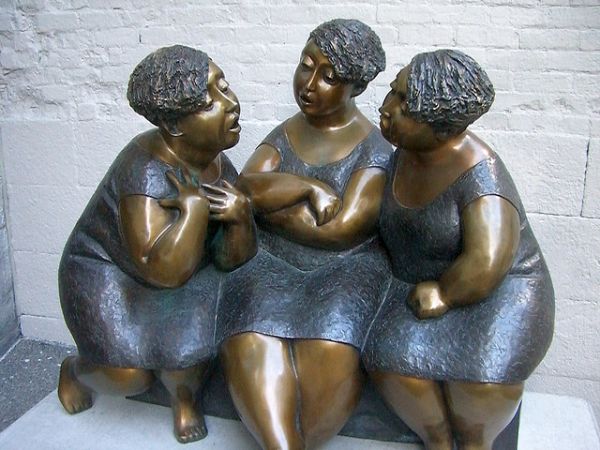Adaptive emotional re-patterning is the New Science replacement
Elisabeth Kübler-Ross pioneered bereavement research in the 1950s with her interviews of people suffering terminal illness. Her ‘five stage adjustment’ model has taken deep root in the USA, identifying a linear transition through anger, denial, depression, then bargaining and ultimately acceptance of mortality. The ‘K-R change curve’ is still considered by many to be an adequate description of emotional intelligence in much wider settings also. Their claim is that, to recognise these phases and allow them adequate time to simply work their way through, is enough to overcome a wide range of stress and adjustment states.
However, since the 1980s a New Science non-linear paradigm to understand life has been born. Computers can now model multiple simultaneous dynamics in adaptive physical and living systems, such as clouds bursting into rain, and people bursting into tears, and describe the relational patterns of interactions underlying (causing) these ‘emergent’ behaviours. In general terms, the New Science allows life to be studied without dissecting it into individual parts that then must have time-sequenced, linear knock-on effects on each other from past to future. Instead, healing can now be nurtured and understood in extended time-frames, where non-linear feedback learning within those time-frames brings moments of sudden ‘systems change’ unpredictably, experienced as personal growth. It’s all about synergic feedback. Helpful feedback conversations in social systems can bring a mutual awareness of supportive personal presence. This presence of loving kindness is the true ‘substance’ of human life.
In the 1990s, awareness started to grow that traumatisation in childhood (and later life) has a lifelong impact on physical, mental, social and spiritual health. Now in the 2020s, trauma-informed training is widely available. However, while factually informing people of the nature of trauma and its ensuing problems, courses do not teach many skills to prevent traumatisation, or to assist recovery from it. Trauma Awareness is a step forward, as is ‘trauma-sensitivity’, both explaining how mirroring and affirming people’s expressed or felt emotion builds the relationships that are the foundation for subsequent growth. A non-shaming, consistently supportive relationship with an emotionally-available adult protects people from adverse experiences deepening into a traumatised victim status, or a lone-survivor status through isolation.
From trauma-informed to trauma-responsive conversations
A step further on again is offered by the Emotional Logic trauma-responsive conversational skills training (elcentre.org). This is a ‘language technology’ teaching a feedback learning method about how unpleasant loss emotions have useful purposes to activate a healthy adjustment to loss. It equips people to know what can be helpfully said anywhere, anytime that would initiate a process of personal growth to ‘come through stronger. Sharing any small amount of the learned knowledge about the useful purposes of unpleasant loss emotions initiates a process of ‘post-traumatic growth’. A spreading wave of understanding can then spread further through social groups, improving adaptability, hope, connection, and the capacity to make shared decisions.

Understanding the New Science of ‘adaptive systems’ behind Emotional Logic’s transformative effect has, however, been slow to trickle through the scientific and health & social care professions. Widespread familiarity with the limited Kübler-Ross approach remains. An equally widespread vain hope has also arisen that the Dan Siegel ‘hand model’, of regulating emotion by reason, also offers a generalisable model of healing or personal growth. Curling the fingers over to cover and restrain the naughty thumb totally misrepresents the socially constructive role of the amygdala, the limbic system, and the unpleasant loss emotions in normal, healthy living. The curled hand model, correctly used, should not simply justify self-calming when facing a shocking situation. It could also represent making a constructive partnership between reasoning and emotion, one that empowers a better outgoing ability to explore adaptive possibilities in socially shared ecologies.
Using the two-handed emotional connection wave
A more helpful variant, therefore, would be to extend the thumbs from both hands and bring them around to touch each other, then wave the fingers in a friendly conversational manner at each other representing a conversation between two people. In this two-handed model, the emotions (touching thumbs) are subtly and pre-verbally conveying vital information about personal values. Notice how, in Jason Schukltz’s sculpture featured with this post, the ladies bodies are mostly touching each other as one talks and the other two listen, one sceptically, and one empathically.
Relating this two-hand model to trauma training courses, those that are still based on a Kübler-Ross model tend to teach unhelpfully that time simply needs to be spent at each linear emotional stage of ‘adjustment’, and that having relationships during each of those stages simply shares the pain, and so helps. That passive view of slow adjustment follows from an individualistic focus on the meaninglessness of emotions as side-effects of material life. In the New Science of adaptive systems, however, emotions are not meaningless. Adaptive systems science encourages assertive engagement in conversations as part of the personal growth to greater strength. Emotions shared in these conversations are vital, pre-verbal information (facial expressions, tone of voice, body language, pheromones in perspiration) about how personal values are being challenged. Knowing how to name those challenged personal values could strengthen the foundation on which to build a future, because, if they are rationally named, they can also be conversationally shared with an ‘other’.
Emotional Logic moves conversations on from talk about feelings and behaviours to values and action plans, a subtle but vital step forward in trauma prevention. Agreeing action plans to preserve even one named value in a changing situation can transform the self-efficacy of a formerly isolated and traumatised person, accelerating their growth into healing and personal restoration.

